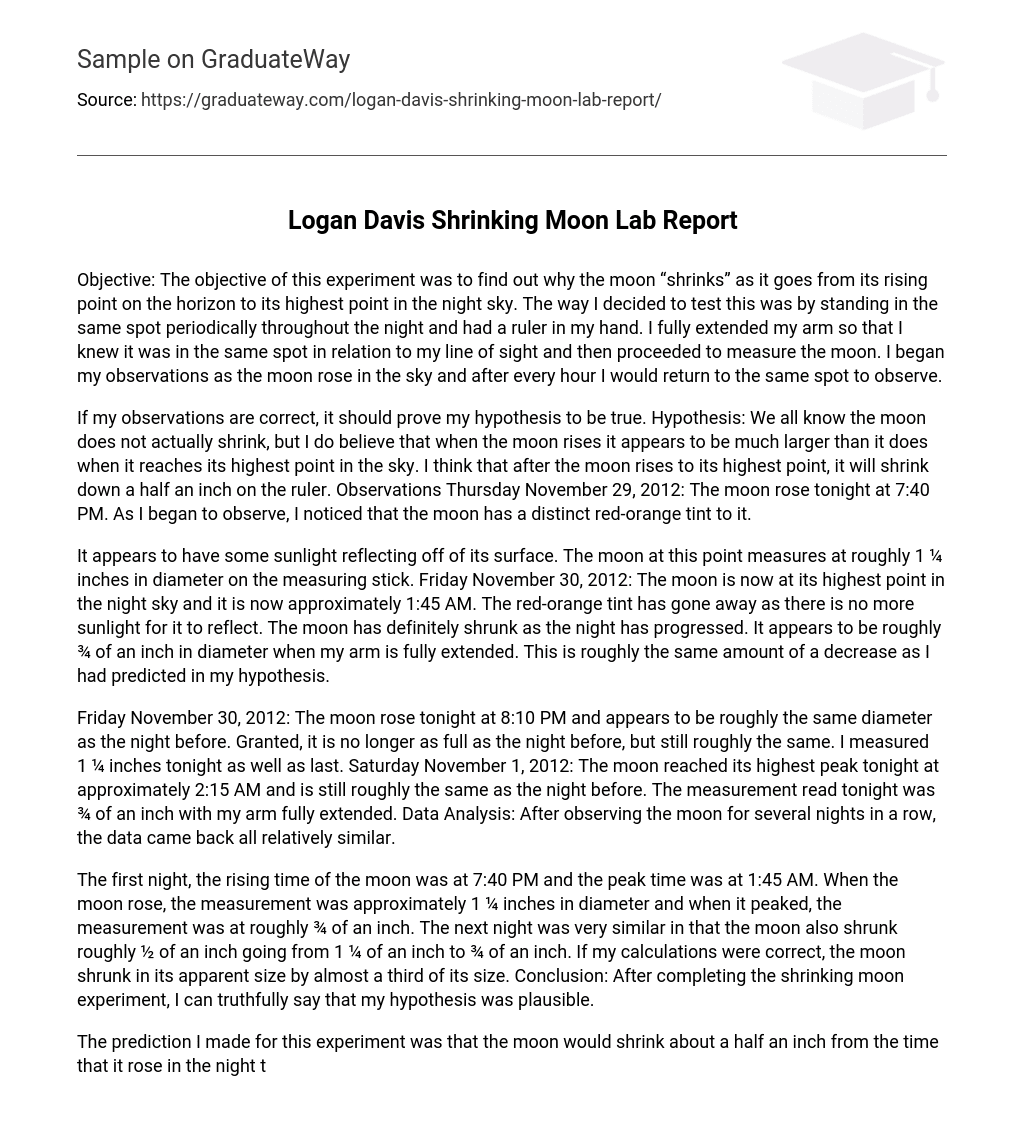Objective: The objective of this experiment was to find out why the moon “shrinks” as it goes from its rising point on the horizon to its highest point in the night sky. The way I decided to test this was by standing in the same spot periodically throughout the night and had a ruler in my hand. I fully extended my arm so that I knew it was in the same spot in relation to my line of sight and then proceeded to measure the moon. I began my observations as the moon rose in the sky and after every hour I would return to the same spot to observe.
If my observations are correct, it should prove my hypothesis to be true. Hypothesis: We all know the moon does not actually shrink, but I do believe that when the moon rises it appears to be much larger than it does when it reaches its highest point in the sky. I think that after the moon rises to its highest point, it will shrink down a half an inch on the ruler. Observations Thursday November 29, 2012: The moon rose tonight at 7:40 PM. As I began to observe, I noticed that the moon has a distinct red-orange tint to it.
It appears to have some sunlight reflecting off of its surface. The moon at this point measures at roughly 1 ¼ inches in diameter on the measuring stick. Friday November 30, 2012: The moon is now at its highest point in the night sky and it is now approximately 1:45 AM. The red-orange tint has gone away as there is no more sunlight for it to reflect. The moon has definitely shrunk as the night has progressed. It appears to be roughly ¾ of an inch in diameter when my arm is fully extended. This is roughly the same amount of a decrease as I had predicted in my hypothesis.
Friday November 30, 2012: The moon rose tonight at 8:10 PM and appears to be roughly the same diameter as the night before. Granted, it is no longer as full as the night before, but still roughly the same. I measured 1 ¼ inches tonight as well as last. Saturday November 1, 2012: The moon reached its highest peak tonight at approximately 2:15 AM and is still roughly the same as the night before. The measurement read tonight was ¾ of an inch with my arm fully extended. Data Analysis: After observing the moon for several nights in a row, the data came back all relatively similar.
The first night, the rising time of the moon was at 7:40 PM and the peak time was at 1:45 AM. When the moon rose, the measurement was approximately 1 ¼ inches in diameter and when it peaked, the measurement was at roughly ¾ of an inch. The next night was very similar in that the moon also shrunk roughly ½ of an inch going from 1 ¼ of an inch to ¾ of an inch. If my calculations were correct, the moon shrunk in its apparent size by almost a third of its size. Conclusion: After completing the shrinking moon experiment, I can truthfully say that my hypothesis was plausible.
The prediction I made for this experiment was that the moon would shrink about a half an inch from the time that it rose in the night to the time it reached its highest peak. By my calculations, I was exactly correct. Granted, it may not have been the most precise measurement of the moon, but I had to make do with the tools that I had. If I could improve anything in my experiment it would be that I would have a more accurate way of measuring, possibly with a telescope or some other tool but with what I was given, I’d say that this was the most accurate way of measuring the moon in the night sky.





